Viola (Viola) is directly related to the genus of the violet family. These plants can be found mostly in temperate regions and in the mountainous regions of the Northern Hemisphere. This genus, according to various sources, unites 400-700 species. There are viols that are endemic to the South American Andes, there are those that grow in tropical South Africa, in the subtropics of Brazil, Australia, New Zealand and the Sandwich Islands. Viola is popularly called pansies. The violet-viola became popular many centuries ago. So, about 2.5 thousand years ago, the peoples living in European territory used these cute flowers to decorate wreaths and garlands, as well as premises during the holidays. The first was the fragrant violet, and then the mountain violet. The first time that work was underway on breeding violets to obtain hybrids was mentioned as early as 1683. The inhabitants of Europe learned about the existence of the Viola Vittrock species in the 19th century. This species was created by crossing the Altai viola, yellow viola, and tricolor viola. Today, garden viola is one of the most popular plants among gardeners. It has several hundred varieties and varieties.
Content
Viola features
Viola representatives can be annuals, biennials and perennials. Such a herbaceous plant reaches a height of 15-30 centimeters. The root system is fibrous, the main stem is erect. Leaf plates with stipules can be pinnately dissected or simple. They grow alternately or are part of the root rosette. Single axillary flowers, reaching 7 centimeters in diameter, are located on rather long peduncles. The petals located at the top are with marigolds, and at the bottom they are larger and have a saccular formation (spur) located at the base. The shape of the flowers and color can be very different, for example: two- or three-colored, monochromatic, striped, spotted, with 1 spot, with an even or wavy edge of the petals, double or simple, etc. The flowering of this plant is incredibly abundant.Depending on when the plant was planted, flowering can be observed from the second half of March to the end of the spring period, or from August to the very frost. There are hybrids that bloom throughout the summer period or 2 times per season. The fruit is a box with seeds inside. Their high germination capacity is maintained for a couple of years.
It is a frost-hardy plant that does well in the shade. However, in a shaded place, its flowering is less abundant, while the flowers themselves become smaller. Loamy, moist soil that is rich in nutrients is best suited for planting. If you plant such a flower on dry sandy soil, then as a result of this, the flowers will also become smaller.
Growing viola from seeds
Sowing seedlings
Sowing seeds can be done directly into open soil. However, the most popular and reliable way to grow viola is through seedlings. If you sow in the last days of February, then such plants will bloom already this year. For sowing, it is recommended to purchase a special soil mixture for violets, while the seeds must be immersed in a solution of zircon or epin for 24 hours. Make grooves in the substrate and add pre-dried seeds to them. It is necessary to sprinkle them with soil, which is previously ground between the palms. Next, watering is carried out, and the container is covered with film or glass. Then the container must be removed to a cool enough place (about 15 degrees).
Seedling
The first seedlings will appear after 7-10 days. As soon as this happens, the shelter will need to be removed, and the container moved to an even cooler place (about 10 degrees). Lighting must be bright, but diffused, while flowers must be protected from direct sunlight. Seedlings must be watered and fed in a timely manner. In this case, fertilizing is carried out 1 time in 2 weeks using a solution of complex mineral fertilizer.
Picking
When exactly to make a pick and how many times? On this account, gardeners have 2 different opinions. So, one part of gardeners believes that it is necessary to dive these flowers a couple of times. In this case, the first pick is made after the appearance of 2 true leaves, and the second - after 15–20 days according to the 6x6 scheme. And another part of no less experienced gardeners believe that the second pick is completely unnecessary for this plant. It should be remembered that this plant can be planted on the site already flowering, while it will take root just as quickly and easily. The flowering of a plant grown from seeds is observed in late spring or early summer.
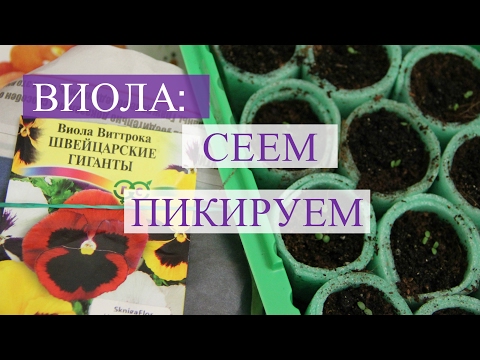

Watch this video on YouTube
Transplant to open ground
What time to plant viola
The time for planting seedlings in open soil directly depends on the climate in a particular area. So, the landing is carried out in April or in May. It is recommended to choose a well-lit area for the viola. It is best if the soil consists of earth, not very finely ground charcoal and dry bird droppings or humus (5: 1: 1). The following soil mixture is also suitable for the plant: sod land, sand, humus and peat (2: 1: 2: 2). Planting should not be carried out in a lowland where groundwater is very close to the soil surface.
How to plant
Viola disembarkation is not difficult. First, the holes are prepared, while it should be borne in mind that a distance of 10 to 15 centimeters must be maintained between the bushes. The planted viols are sprinkled with soil, which should be tamped, and then watered. Perennial viols must be transplanted to a new place 1 time in 3 years, while the bush is divided. If this is not done, then the flowers will grow strongly, and their flowers will begin to shrink.If you want to propagate some rare or favorite variety, then this can be done by cuttings.
Care features
The root system of this flower is superficial and is located at a depth of 15 to 20 centimeters. In this regard, it is necessary that the soil is always slightly moistened and loose. Watering is carried out only when there is a prolonged dry and hot period. If it rains regularly in the summer, then you do not need to water the pansies. It is also necessary to pull out weeds in a timely manner and remove wilted flowers so that the flowering remains lush.
Also, these beautiful flowers need to be fertilized regularly. To do this, once every 4 weeks, feeding is performed with superphosphate or ammonium nitrate (per 1 m2 takes from 25 to 30 grams of the substance).
Diseases and pests
It is quite simple to take care of the viola, and if you strictly adhere to the rules and perform all the necessary procedures on time (watering, weeding, loosening, feeding), then your flowers will always look incredibly impressive, and they will not get sick, and they will not be disturbed by harmful insects ... Often, such a plant is sick with powdery mildew. In an infected specimen, a whitish or grayish coating appears on the surface of leaf plates, buds and stems. Viola can get sick due to the fact that it is constantly fed with fertilizer containing nitrogen, and the disease can also be provoked by abundant dew in the morning in a relatively dry summer period. Diseased bushes must be treated with soda ash, to which you need to add foundation, soap or ground sulfur. In the event that the bush does not recover, then after half a month the treatment must be repeated.
Pansies can also get sick with a black leg or gray rot. The reasons for the development of these diseases are: inappropriate temperature conditions, disturbances in the moisture regime of the soil or air. Try to eliminate the cause of the disease, otherwise the rest of the bushes will become infected. Do not forget to dig up and destroy the infected plants, while you need to water the area where they grew with a solution of foundationol.
In some cases, this flower can get spotted. In an infected bush, the leaf plates begin to dry out, while the flower itself weakens. Be sure to dig up infected bushes. Experienced gardeners recommend burning them without fail so that the disease cannot spread further. The remaining healthy specimens should be subjected to preventive treatment. To do this, they need to be sprayed 2 or 3 times with Bordeaux liquid, while the intervals between treatments should be equal to 14 days.
For this flower, the mother-of-pearl caterpillar of the violet and clover scoops, which feed on the leaves of this plant, is especially dangerous. In order to get rid of pests, plants should be treated with tobacco or chlorophos infusion.
Viola after flowering
Seed collection
Collecting seeds should be done at the end of flowering, and this time is approximately in August or September. After the flower fades, a small box appears in its place, inside which there are seeds. It will be possible to start collecting seeds only after the box turns up. The extracted seeds must be sprinkled on a sheet of newspaper and dried in room conditions. Then they are put away on the refrigerator shelf, where they will be stored. In the event that the seed boxes are left on the bush, self-seeding will occur. Seedlings, as a rule, are dense, and the first plants may appear in autumn or spring. If you do not want to grow viola through seedlings, then simply thin out the seedlings in a timely manner, and, if necessary, you can plant them.
Wintering
Modern varieties of viola, which are perennial plants, are highly frost-resistant.If they are covered with dry leaves or covered with spruce branches, they will calmly endure a drop in air temperature to minus 30 degrees. If you are growing annuals, they must be disposed of after flowering ends.
The main types and varieties of viola with photos and names
Viola wittrockiana
The most popular among gardeners is this particular species, which is also called pansies. This perennial plant is cultivated as a biennial. In height, the bush can reach from 20 to 30 centimeters. It has alternately located oval leaf plates, along the edge of which there are obtuse teeth. The flowers are single, relatively large (4–10 centimeters in diameter). They can be of different colors and shapes. Florists divide plants of this type into several categories: according to the time and quality of flowering, according to the size of flowers, according to their color, shape and level of frost resistance. If the size of the flowers is taken into account, as well as their number on the bush during the flowering period, then the plants are divided into 2 groups: multi-flowered (multiflora) and large-flowered (grandiflora) varieties. If the color of the plant is taken into account, then in this case the varieties of such flowers are conventionally divided into: two-color, one-color, and also spotted. It should be remembered that the same variety can be both spotted and bicolor.
Single color varieties
- Viola White... The height of the spreading bush is 0.2 m, and its diameter is about 0.25 m. The leaf plates are green. The flowers are white, have a slight yellowness and greenness. They are very fragrant and are located on long peduncles. Flowering of this variety is observed from the second half of April to the first days of August and from the last days of September to October. Covers winter well under cover.
- Blue Boy... The height of the bush is about 0.25 m. The leaf plates are glaucous. The diameter of the ruffled bluish-lilac flowers is about 6 centimeters. The petals located on top are bent back. And also at the base of all the petals there are strokes of a dark lilac color. Up to 19 flowers can be opened on one bush at the same time. Bloom is observed from April to August and from September to October. Under cover it tolerates wintering well.
- Rua de Negri... The bushes are compact, they reach 0.23 m in height. There is a bluish bloom on the surface of the leaves. The flowers are five centimeters in diameter. Velvet petals are rounded, wavy along the edge, slightly bent back. At the base of the petal, located below, there is an eyelet of a rich yellow color. At the same time, up to 14 flowers can open on a bush. Flowering occurs in April – August and September – October. If the viola is covered, then it will well endure the winter.
- Viola red... Erect shoots reach 0.2 m in height. The red flowers have a diameter of about 7 centimeters, while at the base of the petals there is a very dark eye.
Bicolor varieties
- Jupiter... A compact bush, reaching a height of 16 centimeters. The leaf plates are dark green. The diameter of the flowers is about 5 centimeters. The purple-white flowers are round. The velvety petals on the bottom are dark purple, while those on the top are bent back and white at the base. Up to 20 flowers can open at the same time. Winter resistant.
- Lord Beaconsfield... The height of the bushes is about 25 centimeters. The leaf plates are slightly gray-gray. The diameter of the flowers is about 5.5 centimeters. The petals located below are dark purple with an uneven border along the edge of a lilac color. The upper bluish-white petals have ink strokes at the base. About 30 flowers can open on a bush at the same time. The variety is frost-resistant.
- Saint Knud... On compact bushes, the height of which is about 0.2 m, there are green leaf plates. The diameter of the flowers is about 5 centimeters.Strongly protruding forward lower petals have a deep orange color, while at the base they are red. The petals located on top are pale orange-yellow in color. At the same time, up to 19 flowers can open on a bush.
Spotted varieties
- Shalom Purim. This is a several times improved form of the Viola Rococo variety. Her flowers are also double, but the petals are very corrugated. The flowers are large (1/3 more than the standard). Sold in specialty stores as a mixture of seeds of various colors. It also differs from the mother plant in that it grows better not in a sunny place, but in a small partial shade, in this case the petals will be the most corrugated.
- Hybrid F1 Tiger Eyes... This brand new hybrid has an amazing color. The flowers are small, they reach only 3 centimeters in diameter, on the surface of the yellow petals there are many thin streaks of brown color. This plant is suitable for growing both outdoors and in a pot. The difference between this hybrid is that it blooms very early and luxuriantly, and its flowers have a pleasant smell.
- Hybrid F1 "Cassis"... The flowers, located on a compact bush, are purple in color and have a thin border around the edge of a white color. The flowering is very lush, it is characterized by increased winter hardiness.
Viola horned (Viola cornuta), or ampelous viola
The ampelous viola is still quite popular among gardeners. The height of this perennial varies from 15 to 25 centimeters. The branchy rhizome is creeping, it grows and forms a carpet. The cross-section of the shoots is triangular, oblong leaf plates are large-toothed, they reach about 6 centimeters in length. The stipules are pinnately incised. The bush has a huge number of flowers, in diameter they reach from 3 to 5 centimeters. They are painted in various shades of purple and lilac, they have a small yellow eye, and horn-shaped spurs. Flowering occurs in May – September. It has a high frost resistance, but it is recommended to cover it for the winter. It is necessary to grow ampel viola in almost the same way as garden viola. Breeders from England work most of all on obtaining new varieties of this species:
- Arkwright Ruby... This variety is large-flowered. The color of the petals is deep red, there is a yellow eye. On the base of the petals, located below, there are specks of a dark color.
- Balmont Blu... The stems of the bush are climbing, and the color of the flowers is blue. Recommended to grow in both balcony containers and hanging baskets.
- Pearl Duet... The flowers have 2 petals, located on top, are burgundy, and the 3 lower ones are dark pink and have very dark streaks at the base.
Fragrant Viola (Viola odorata)
Also often grown in gardens. This perennial plant has a thick rhizome. The length of the sheet plates, which have an almost round shape, is 9 centimeters, and the width is 8 centimeters. They are assembled into an outlet. Large fragrant flowers are colored in various shades of purple. Flowering occurs in May and lasts 20 days. There are repeated blooms in autumn. Varieties:
- Rosina... The flower is externally similar to a flying bird. The fragrant pink flowers are darker towards the base. The petals located on top are bent, and on the side they are slightly extended forward.
- Charlotte... The color of large flowers is dark purple.
- King... There are fragrant purple flowers.
Viola moth, or nodule (Viola papilionacea, Viola cucullata)
The height of the bush is from 15 to 20 centimeters. The leaf plates have a serrated edge and are reniform or heart-shaped. Large single flowers are colored purple. The petal located on top is white with a strip of purple color, their center is greenish-yellow almost white. Blooming is observed in April – June. Varieties:
- Freckles... White petals have many specks of purple color, if it is cool in spring, they become larger. Flowering occurs in spring and ends at the beginning of the summer. Differs in unpretentiousness.
- Royal Robe... Miniature variety. The flowers are fragrant, their petals are bent back, at the base there are streaks of black or yellow. The color of the petals ranges from purple to violet-blue.
- Red Giant... Large purple-red flowers, located on long peduncles. Blooms for a very long time.
Also suitable for cultivation in the garden of viola: graceful, mountain, yellow, marsh, Altai, hairy, Labrador, one-flowered, variegated, sandy, somkhetian, dog, sister, foot, amazing, hill and Selkirka viola. At the moment, they are used practically only by some breeders in their work.




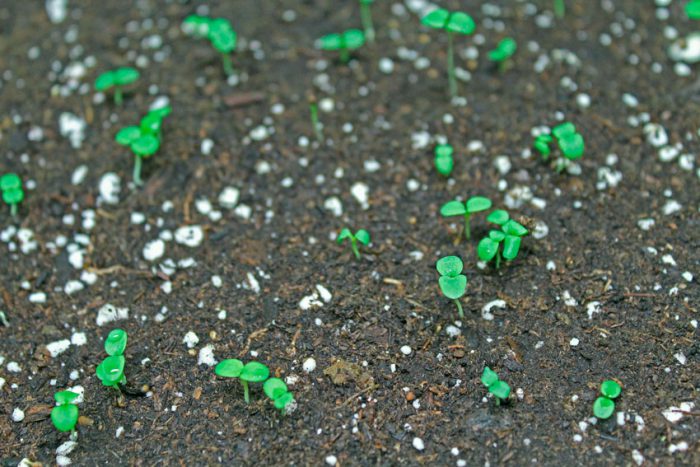
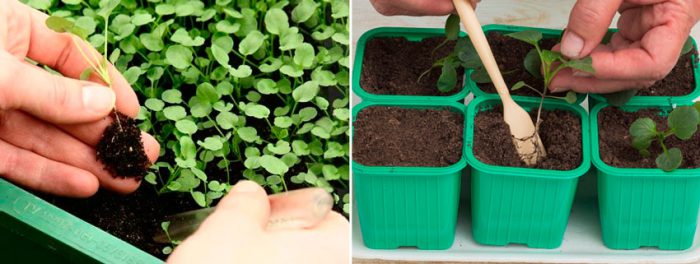

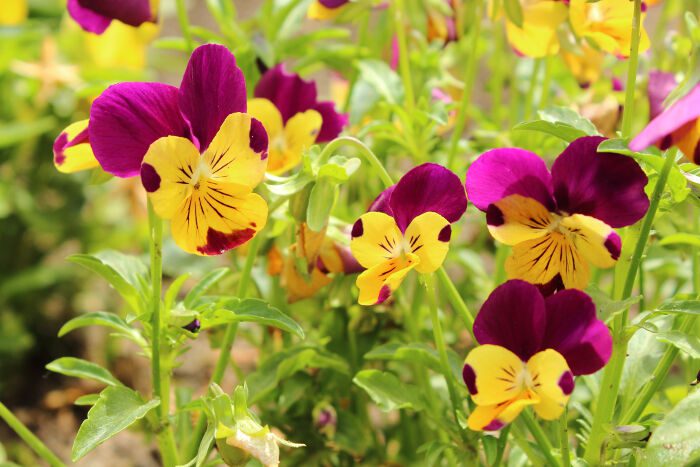

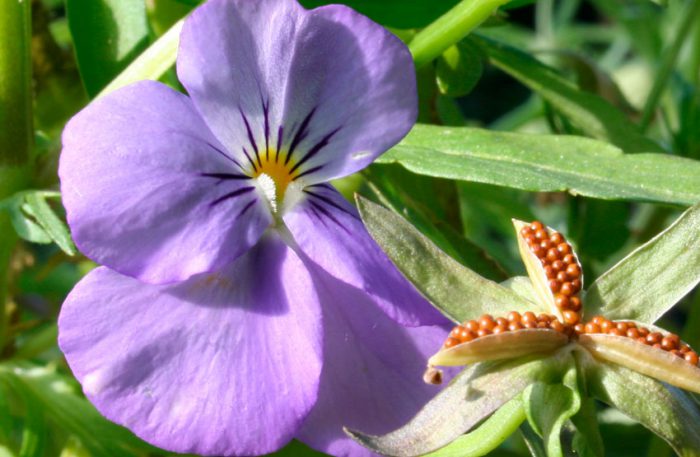


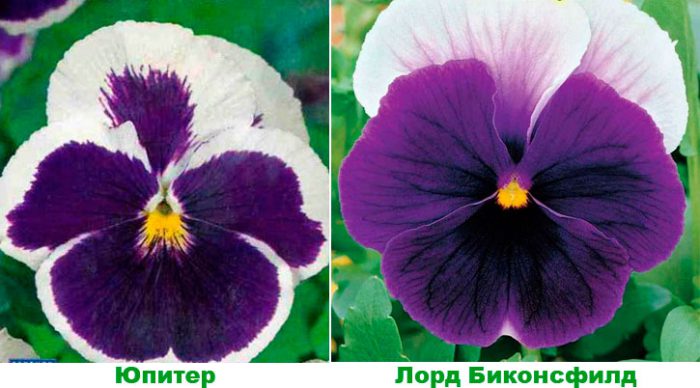
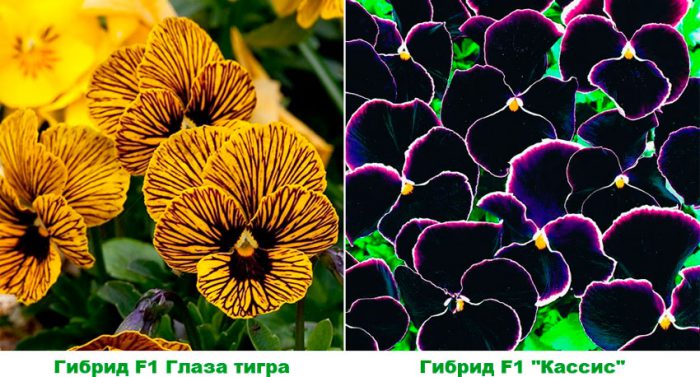

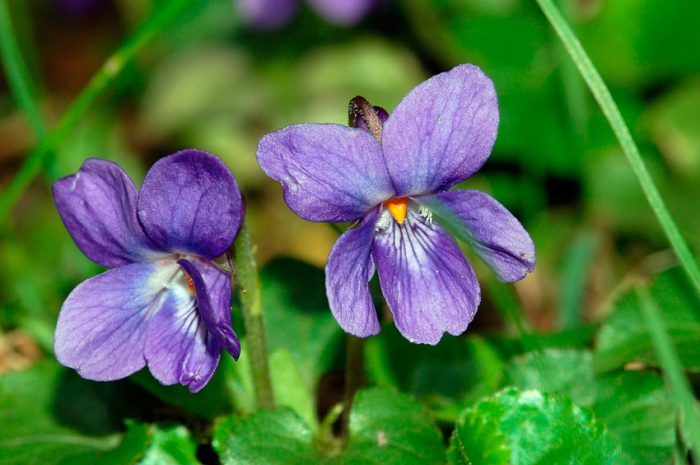
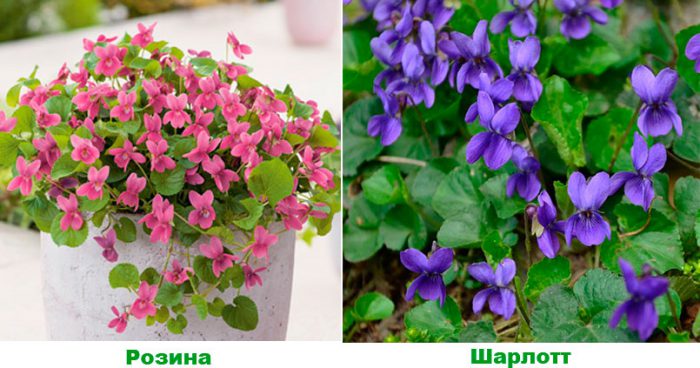
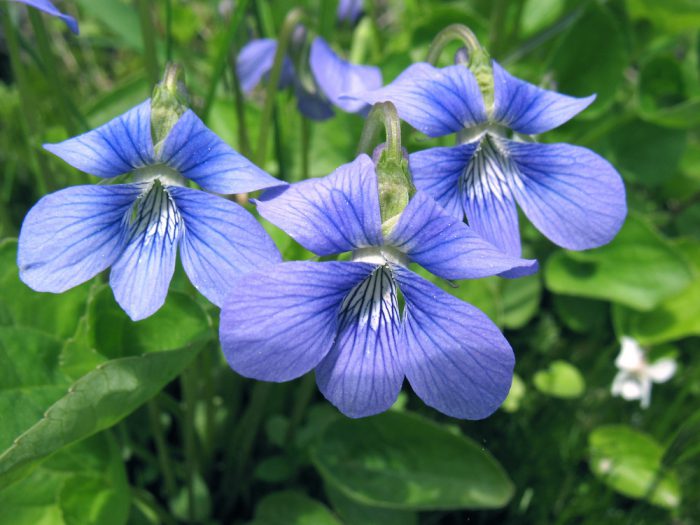
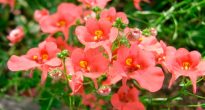



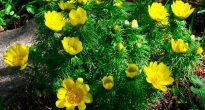





Good afternoon, very informative article. After looking at the photo, I wanted to buy some varieties of viola, thanks for the wonderful photos.